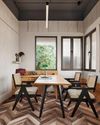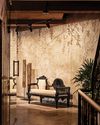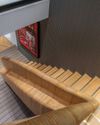The last decade of Dutch architecture stands in sheer contrast to the golden years of the 1990s when almost anything was possible.

Many foreign architects had come to the Netherlands then and still practice here. The exciting NAI (Netherlands Architecture Institute), the generous Dutch Architecture Fund and many national policies defi ned Holland as one of the leading nations when it comes to architectural culture. Although the importance of architecture (together with fashion, design and e-culture) is still underlined today and even defi ned as the top sector creative industries within the national economic policies, this vision is accompanied by less budget; institutions had to work more effi ciently and merged to the New Institute (HNI) and the fund for the creative industry. National policies are, as some critics claim, mainly praising the achievements of the past. The work load of architects decreased by more than 60%. The housing production in major cities almost halted due to the crisis; private clients were not granted loans to buy new houses as several of the Dutch banks were nationalised in order to protect them from bankruptcy, and they didn’t take any chances. In short it can be said that prosperity in a couple of branches in the Dutch economy including building had seriously decreased.
New Approaches, Bottom-up and Temporary Use: The decline of the one often comes together with the increase of another. While the changes at the former NAI are still lamented, smaller and bottom up alternatives to the national top down programs have come into place. Professional audiences that want to engage in discussion and research about current developments in architecture have a much wider choice today, including Pakhuis de Zwijger in Amsterdam, the Rotterdam Architecture Centre Air, Platform 31, Dutch Design Week Eindhoven and the annual What Design Can Do conference. But also small scale initiatives like Garage with the Talks about Architecture evenings curated by De Kort Van Schaik architects.
This story is from the {{IssueName}} edition of {{MagazineName}}.
Start your 7-day Magzter GOLD free trial to access thousands of curated premium stories, and 9,000+ magazines and newspapers.
Already a subscriber ? Sign In
This story is from the {{IssueName}} edition of {{MagazineName}}.
Start your 7-day Magzter GOLD free trial to access thousands of curated premium stories, and 9,000+ magazines and newspapers.
Already a subscriber? Sign In

A GRECIAN RETREAT
Shimona Bhansali imbues a subtle touch of opulence to this home in Mumbai

A BOLD STATEMENT
Dhampur Sugar Mills Limited's workspace in New Delhi designed and built by Officebanao adopts an industrial narrative

A BREATH OF FRAGRANT DESIGN IN DELHI'S HEART
An office that smells like perfumery; that is the vision that TWI brought to life in this office space designed for an acclaimed perfume company in India

MASTER OF ALL TRADES
The ethos of forward-thinking and ingenuity finds its architectural counterpart within the walls of Nikhil Kamath and Abhijeet Pai's office-a vision of organic design infused with the essence of India

A TOUCH OF OPULENCE
Designed by Aparna Kaushik, this Delhi office displays an interesting balance of classic aesthetics and contemporary sensibilities

THE WOODEN WONDERLAND
Priyanka and Piyush Mehra envision a stunning experience centre for Vikas Plywood

THE HUB: BUILDING COMMUNITIES
Studio Lotus designs a dynamic mixed-use community hub that activates Chennai's largest IT Park

THE WINNER'S PERCH
Baldiwala Edge designs a Singapore-based ship broker's office as a torch collector's paradise, offering a 360-degree bird's-eye view of the Mumbai skyline

THE DIRECTOR'S CABIN
Designed by Envisage, this office gives a new definition to the traditional notion of biophilia

Designing Corporate India
From weaving the magic of a Star Trek-themed command centre to crafting bespoke block-printed workstations, Vijaya Bhargav and Arnab Ghosh-the trailblazing co-founders of Ostraca-have astonishingly transformed a staggering 29 million square feet of office space for India's tech giants and global enterprises-all while maintaining a flat hierarchical company culture-fuelling a master class in corporate design